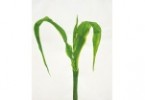Matisse: In Search of True Painting
Written by Christine Ritenis
New York Art Correspondent

Is it possible that painting “did not come easily” to the renowned early 20th century artist Henri Matisse? How can this be, when according to critic Clement Greenberg (The Nation, 1949), Matisse was a “self-assured master who can no more help painting well than breathing”? With its distilled collection of pairs, trios, and series, The Metropolitan Museum of Art’s current exhibit, Matisse: In Search of True Painting, focuses on how “he questioned, repainted, and reevaluated his work” throughout his career. In his words, this process was aimed to “push further and deeper into true painting.” Matisse repeated subjects and copied compositions from early on. Beginning in the 1930s, he additionally had his work photographed at critical stages to document progress and to determine “whether he had advanced or regressed.”






